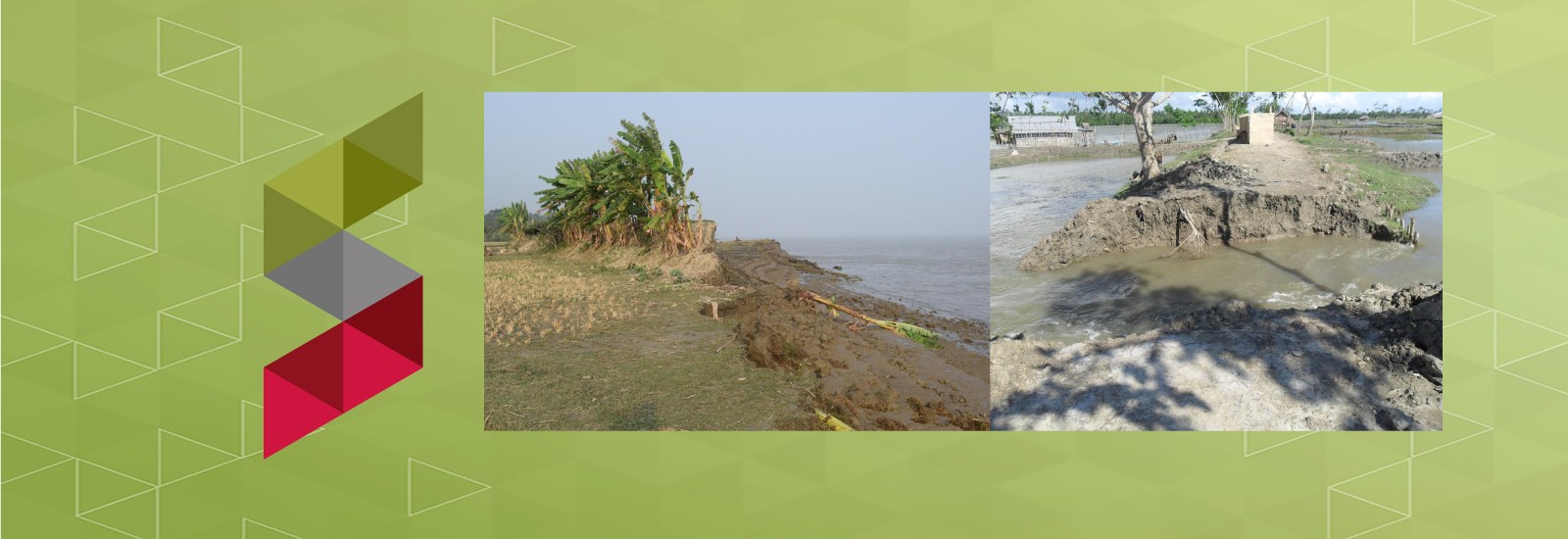This is farmland along a river in Bangladesh.
At least, it used to be.
The stubble on the left is a rice field that used to stretch another 600 meters out into the river. Flooding caused by ice melt from the Himalayas has eroded more than 100 meters of this farmland each year. One farmer says two acres of his farm have disappeared just since last year.
But that’s not Bangladesh’s only climate-related problem.
As a delta, Bangladesh is also sensitive to changing patterns of drought and precipitation. As a coastal country, Bangladesh has already seen the effects of rising sea levels and increasingly intense typhoons and storm surges.
Bangladesh, a country of 165 million in southern Asia, can teach people across the world a lot about how everything from climate to food to migration to economics is intertwined, said Joyce J. Chen, associate professor of agricultural, environmental, and development economics and SI affiliated faculty. Chen studies climate change and migration in Bangladesh.
Part of Chen’s unique research centers on the way salt water encroaches into soil and drinking water, making growing crops and finding fresh water increasingly difficult.
“It's true that eventually the cities will be underwater, but a lot of stuff happens in between,” she said.
Places like Louisiana are experiencing this in-between too. Certain roads become washed out and areas become inaccessible throughout the year as extreme weather events become more common.
“Every year we can say, 'Oh this was a bad year,’ but it is part of this longer-term process,” Chen said. “So as we look at those kinds of events we can start to get a sense of what might happen when these cities really start to become uninhabitable.”
For many, these threats to livelihood create good reason to migrate. Sometimes residents can stay close, moving to the next town over in Louisiana or in Bangladesh, moving to a bigger city temporarily. Sometimes they're forced to move to a new state or across country lines.
Migration can be hard to predict and changes in policies or in the economy could change how and where people move.
“Over a longer time frame, it becomes harder to predict because lots of things are changing, lots of policies may be changing, the economy is changing,” Chen said. “If you build a bunch of new garment factories in a coastal city in Bangladesh, then we might not see anything that looks like climate migration anymore because people switch over to working in garment factories or something.”
It’s possible, though, that this sort of switch could create instability in a country such as Bangladesh, which produces most of the food it consumes.
“If too many people move away from rice cultivation, they could see spikes in rice prices, so that could lead to more food insecurity and malnutrition,” she said.
Chen and two other Ohio State researchers who are also SI affiliated faculty, J. Craig Jenkins, Academy Professor Emeritus of Sociology, and C.K. Shum, Distinguished Scholar in Earth Sciences, are working alongside water management organizations and local governments to create a flood and drought early warning system to help people adapt and safely stay in place rather than leave their homes.
Climate change lessons from Bangladesh's disappearing farms continued.
